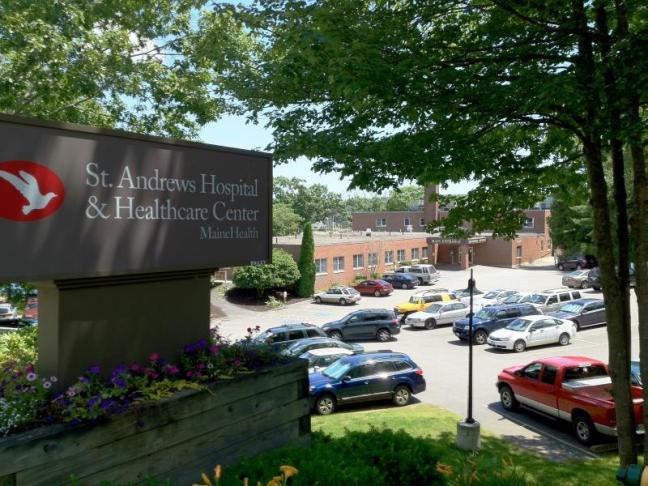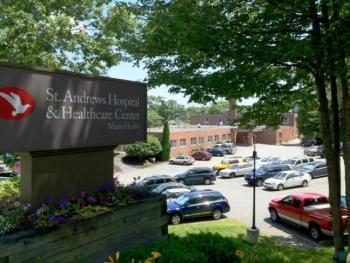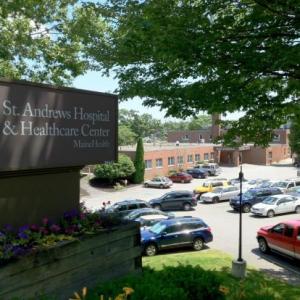Tour of hospitals provides insight
St. Andrews Task Force volunteers are every organization’s dream.
For them, finding a different answer to Lincoln County Healthcare’s proposed changes at St. Andrews Hospital has become an all-consuming goal. To achieve this end, they have enthusiastically embraced every challenge from the relatively simple one of fundraising to the incredibly complex one of understanding the multifaceted world of healthcare.
Over the last month, a volunteer subset known as the hospital work group has taken on the task of surveying other small hospitals in Maine, with an eye to defining what may work here on this peninsula.
Patty Seybold, business consultant and author, is the presumptive leader of the 10-plus member group, which includes a nurse, nurse manager, information technology manager, human resources and software executives, a former nonprofit director and university dean, a small business owner, as well as Scientific American blogger Dr. Judy Stone and former St. Andrews CEO Peggy Pinkham.
Seybold embodies the consummate St. Andrews volunteer ethic. She is organized, hard-working and eloquent. She has worked full-time on task force projects since early September.
Seybold estimates these efforts have cost her company over $150K in revenues, but considers all this work to be an investment, both in her community and her professional career. A few weeks back, she completed a community-wide survey of St. Andrews Hospital use and local healthcare needs.
Work group’s findings
Last week, five members of the work group provided an informal report on their efforts to date. Their findings are being provided to iVantage consultants, who have been engaged to study local healthcare needs and solutions by the task force. The iVantage report is expected by the end of December.
Seybold said the information gathered by the work group may also be used by the task force to develop a strategic plan for healthcare on this peninsula.
So far, the hospital work group has traveled to eight critical access hospitals across the state and engaged in long conversations with the executive teams and senior staff of those facilities. At least two more hospitals will be visited (there are 16 critical access hospitals in Maine, including St. Andrews Hospital).
While on the road, the volunteers have formed quick friendships and found the best, and sometimes the only, places to eat in the backwaters of Maine.
Group members said they were pleasantly surprised by how willing hospital leaders were to meet with them and quickly came to the realization that many in Maine are closely watching the healthcare story unfolding here in Boothbay Harbor.
“Everyone was so supportive of us and wished us good luck. They said ‘Please let us know what we can do to help you’,” Dorothy Hurt said. “The Machias hospital CEO (Doug Jones) called us the canary in the mine shaft,” Margaret Perritt said.
Work group members said a consistent message of these hospital leaders was that small critical access hospitals can be profitable and sustainable. “All of these hospitals are profitable. All of these hospitals said it can work,” Fran McBrearty said.
McBrearty said he believes that St. Andrews is in financial trouble because all of its profitable services, such as surgery and orthopedics, have been “taken away” since its affiliation with MaineHealth.
McBrearty said he also noticed that the small hospitals they visited, like St. Andrews, rely on alliances with other hospitals to survive.
To McBrearty and other members of this work group, the problem is not hospital affiliations per se, but St. Andrews’ chosen alliance with MaineHealth.
“Our trustees made an unhealthy choice in good faith,” McBrearty said. Seybold said Maine's other hospital affiliations, Central and Eastern Maine Healthcare systems, are more supportive of maintaining local services.
Mental health services, telemedicine and wellness programs sparked particular interest in the work group. Seybold said overall they were most impressed with the people, culture and programs of C.A. Dean Hospital in Greenville, whose small nursing bed wing “looked like the retirement home my mom lives in.”
Perritt and others in the group said they were particularly impressed with the tenacity of people who work in the hospitals surveyed.
“There’s a sense of excitement about what they’re doing, a sense of creativity. The attitude is if there’s a need, we can meet it. And we can figure out how to punch the codes so it works financially,” Perritt said. She also said the idea that Lincoln County Healthcare would walk away from the additional Medicare dollars it receives for being a critical access hospital is untenable.
Seybold said the group concluded choosing a niche (a specific, unfilled health need) and specializing in it may help to attract patients and offset local declines in patient volume. In their report, they offer suggestions for best practices and strategic programs to be considered here.
Seybold’s comments about the overall picture gleaned from their hospital survey research sounds precisely like what has been heard from MaineHealth CEO Bill Caron, Lincoln County Healthcare CEO Jim Donovan and Medical Director Dr. Mark Fourre about their goals for healthcare.
“The overall goal we found is to reduce emergency room and inpatient use and increase primary physician practices and proactive care,” Seybold said.
How does this relate to St. Andrews?
The work group has not as yet met with Lincoln County Healthcare senior staff or with any of the other critical access hospitals associated with MaineHealth. Seybold said they were not sure if they would do so.
This data gap creates a significant deficiency in their report and might lead some to assume that what the work group found at these hospitals does not exist locally.
In fact, many of the services and programs highlighted by the work group are available here. There are also other factors, such as distance to nearest hospital, population size, or the relative numbers of Medicare and Mainecare patients, that are relevant to this discussion.
Without a more complete understanding of local services and a thorough consideration of other factors, it is difficult to determine what might be useful or new in the hospital work group’s report.
In this respect, the work group report is similar to other task force’s conclusions and findings that have been presented to the community without ground truthing or input from Lincoln County Healthcare.
On Friday, LCH CEO Jim Donovan said he did not wish to comment on the hospital work group’s report. He said that LCH and MaineHealth will respond to the task force's reports and legal position paper but not until after the iVantage consultant's report is completed.
"We will have a response. We are looking at this as a whole, not as separate pieces," Donovan said. The healthcare organization is also planning a public information meeting for some time early in 2013.
The task force and Lincoln County Healthcare, who have mostly met separately to discuss changes at St. Andrews, plan to hold their third meeting this Friday, Dec. 21 in a closed session. The two groups said they are working toward the mutual goal of developing the best healthcare system for the peninsula and are focusing particularly on emergency services.
The task force normally meets in public session, but Town Manager Jim Chaousis wrote in an email that a closed, executive session is allowed under a state law exception that allows a board to consult with its legal representative.
Chaousis wrote that attorney Tom Tavenner will attend Friday’s meeting, but Julius Ciembroniewicz, the task force’s legal consul, will not attend. Lincoln County Healthcare indicated that their legal representatives will not attend the meeting.
Sue Mello can be reached at 207-844-4629 or sumello@boothbayregister.com.
Event Date
Address
United States

























